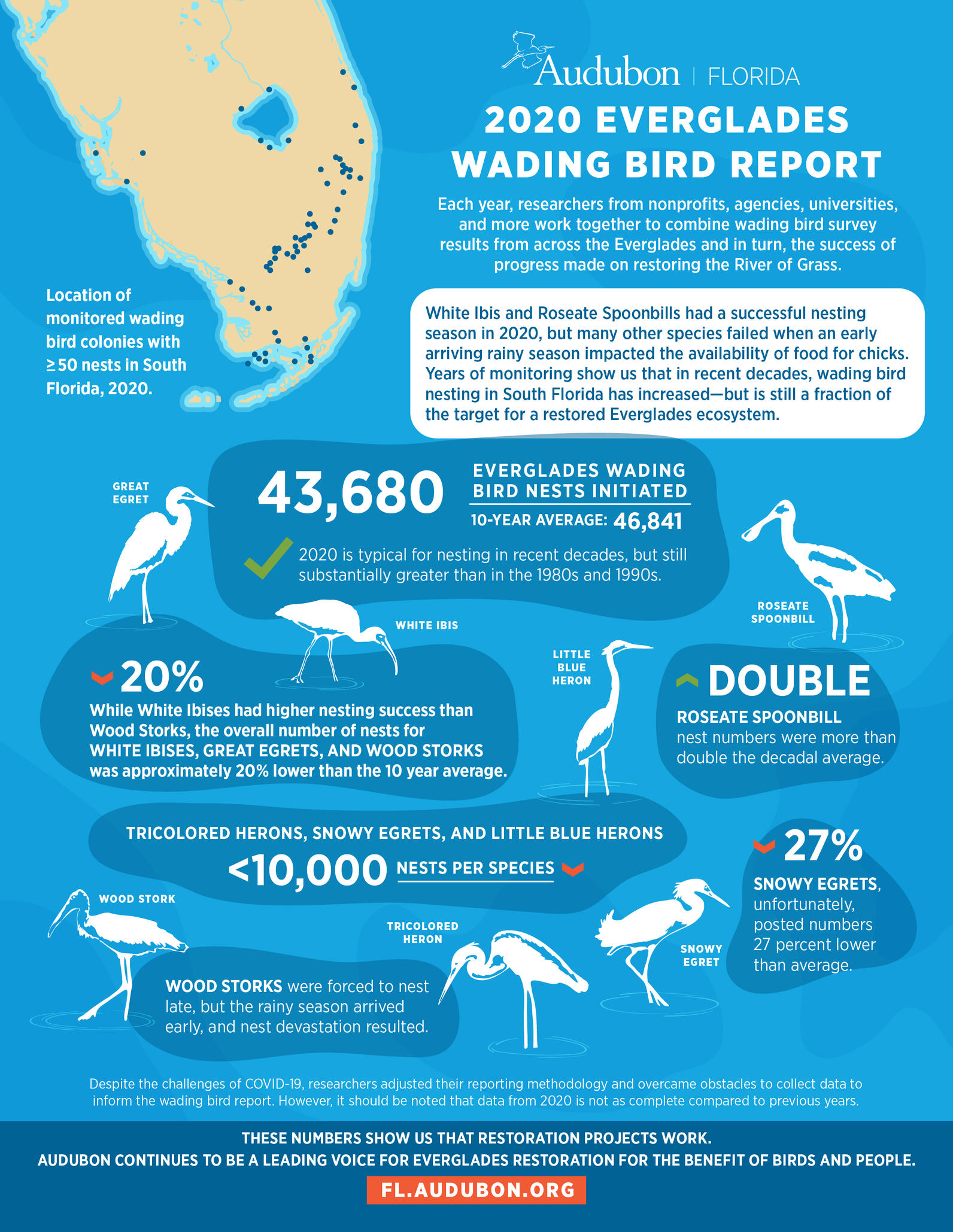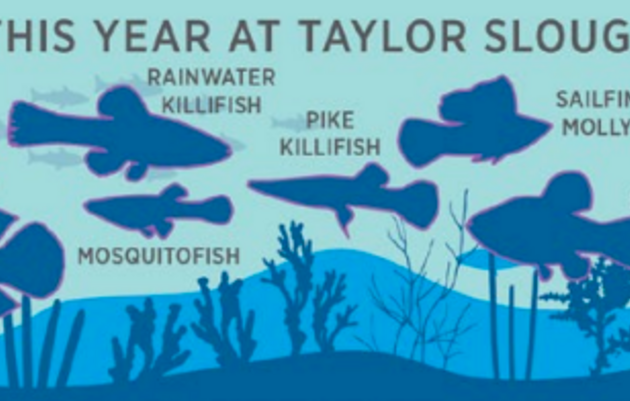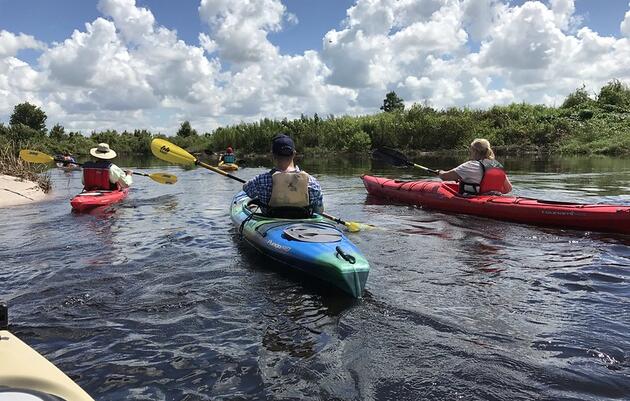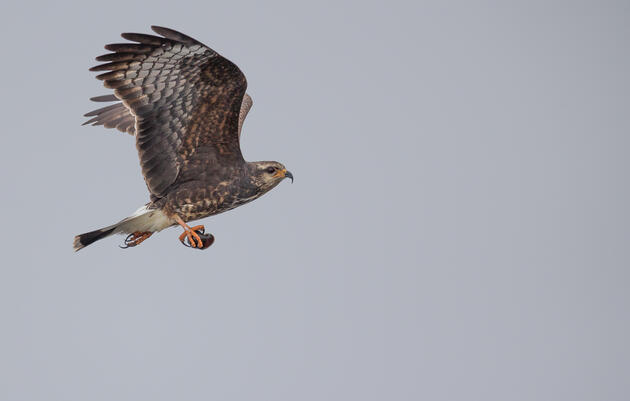To read Audubon’s wading bird report, click here.
Are restoration and conservation efforts improving the health of the Everglades? The birds tell us.
White Ibis and Roseate Spoonbills had a successful nesting season in 2020, but many other species failed when an early-arriving rainy season impacted the availability of food for chicks. Years of monitoring show us that in recent decades, wading bird nesting in South Florida has increased but is still a fraction of the target for a restored Everglades ecosystem.
Wading birds are important indicators of ecosystem health in the River of Grass, and each year the South Florida Water Management District – in collaboration with Audubon Florida and other partners – synthesizes wading bird survey data from across the Everglades to examine system-wide trends. When wading birds nest in large numbers and fledge chicks most years, they tell us that our efforts to improve the hydrology of South Florida ecosystems are successful.
“The science tells us that Everglades restoration works for wading birds,” says Kelly Cox, Audubon Florida’s Director of Everglades Policy. “This report shows that if we remain steadfast in our commitment to Everglades restoration, wading birds will have a greater chance of reaching their historic numbers.”
Nesting numbers in 2020 were an order of magnitude higher than those seen in historically low nesting years in the 1980s and 90s. However, 2020 nesting still fell short of the historically high nest numbers of the 1930s and 40s. This suggests that restoration efforts since the 1990s have improved the foraging conditions that lead to increased nesting, but significant room for improvement remains as Everglades restoration continues.
Climate change-induced changes in seasonal rainfall patterns, including stronger and more frequent storms, will continue to negatively impact wading bird nesting.
Despite the challenges of COVID-19, researchers adjusted their reporting methodology and overcame obstacles to collect data to inform the 2020 Wading Bird Report. Audubon commends these efforts and the resilience of these scientists in the face of such hardship, but notes that some data are incomplete compared to previous wading bird reports.
To read Audubon’s wading bird report, click here.













